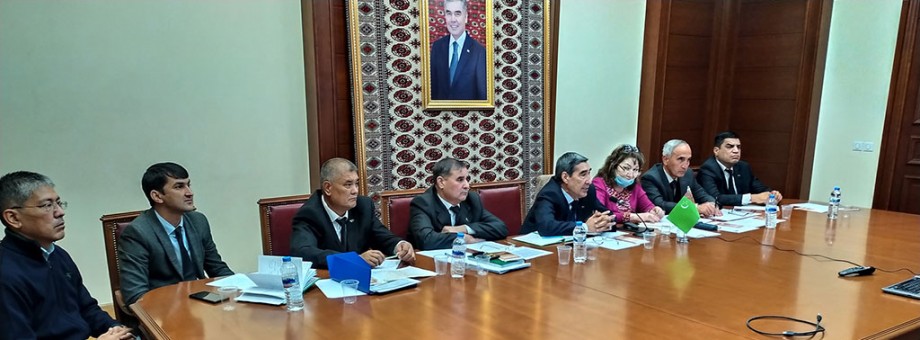DESERT ECOSYSTEMS OF TURKMENISTAN ARE TO RECEIVE INTERNATIONAL RECOGNITION

Intermediary results of “Central Asian Desert Initiative (CADI) – Protection and sustainable use of deserts in Turkmenistan” regional project of the Ministry of Agriculture and Natural Protection of Turkmenistan and the Michael Succow Foundation for the Protection of Nature (Germany) have been outlined.
The CADI project is implemented in cooperation with the University of Greifswald and sub-regional branch of the United Nations Food and Agricultural Organization for Central Asian countries for two years.
Environment protection activity of the participants of the project is aimed at protection of biological diversity and development of ecosystem functions of Turkmenistan’s deserts. It also provides the development of the paperwork for nomination of desert ecosystems of Turkmenistan to the UNESCO World Heritage List, conduct of activities for improvement of management of expansion of the territories of desert sanctuaries, provision of technical support to joint field studies, training of personnel of the reserves and other activities.
Personnel of Repetek, Bereketly, Garagum and Gaplangyr State Reserves takes an active part in joint project. Before the end of the last year, specialists, who are engaged in natural protection sphere, have discussed the plans of reserves’ management and opportunities for expansion of their territories. The 3rd session of Coordination Committee has been held with participation of international experts in video conference format. Coordinators of the projects from three Central Asian countries – Turkmenistan, Uzbekistan and Kazakhstan, have reported on performed work.
National experts have made big studies for the last years. In particular, field expeditions have been organized to Eastern, Central and Northern Karakums, during which the inventory of biological diversity has been carried out and necessary information has been gathered for development of the reserves’ management plans. Scientific reports and updated lists of flora and fauna of deserts have been prepared. The materials of the expeditions will be used in the nomination dossier “Turan deserts of temperate natural zones” for nomination of desert ecosystems of Central Asia to the UNESCO World Heritage List. According to the requirements of the Convention on Potection of the World Cultural and Natural Heritage, the experts of the project have developed a resume (initial list) of serial transnational objects, which has been presented to the UNESCO World Heritage Committee.
Turan Depression deserts of Central Asia are distinguished with special climate conditions and unique species diversity. The components of proposed serial transnational object “Turan deserts of temperate natural zone” reflect the variety of geomorphological deserts as a result of current processes of the formation of earth surface. During long-lasting and continuing evolution, the animals and plants have adapted to extreme natural conditions. They have incredible adaptation abilities including morphological, physiological and behavioral as well as ability to adapt to adverse ecological conditions of deserts.
However, despite that Turan Depression deserts are represented by vast land spaces with high ecological significance, the deserts are one of the less presented biomes of the world importance under the Convention on Protection of the World Cultural and Natural Heritage according to the studies of International Union for the Conservation of Nature (IUCN, 2020). This year, the experts of the project will have to take some measures for development of serial transnational nomination on inclusion of Turan Depression deserts to the UNESCO World heritage List.


 NEWS
NEWS